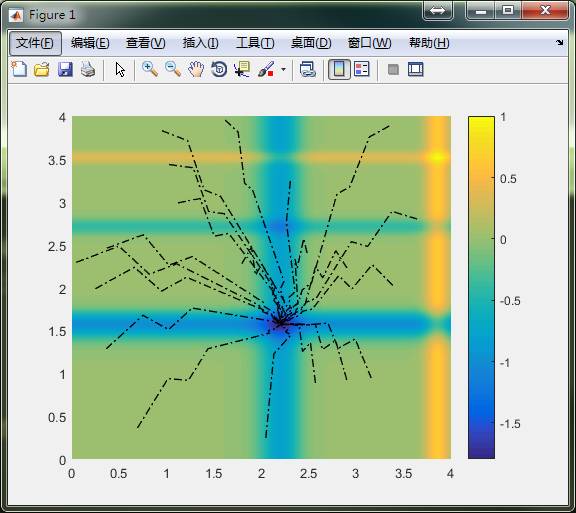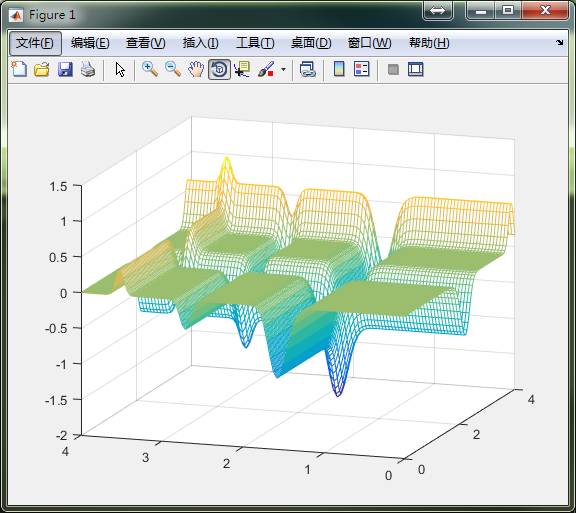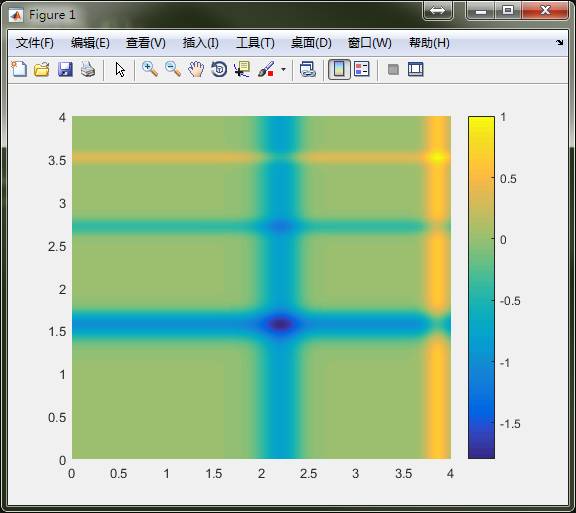这篇文章主要介绍“PSA算法怎么用”的相关知识,小编通过实际案例向大家展示操作过程,操作方法简单快捷,实用性强,希望这篇“PSA算法怎么用”文章能帮助大家解决问题。
为了求解优化问题,有很多生物启发算法。通过生物的某些特性来避免局部最小、加快寻优。这里要介绍的是香港理工大学(The Hong Kong Polytechnic University)的Yinyan Zhang 和 Shuai Li 提出的Porcellio scaber算法(PSA),学习的应该是中学生物书上讲的鼠妇的生存规则。
function PS_simple(number_of_PS,MaxStep)
% porcellio scaber的数量
N=number_of_PS;
%initalize a matrix to store position data
x=zeros(MaxStep,2,N);
%Generate the initial positions of all the porcellio scaber
x(1,:,:)=4*rand(2,N);
%Set weighted paramter \lambda for decion based on aggregation and the
%propensity to explore novel enviroments
lambda=0.8;
%generate a series of \tau and make each elment of \tau a zero mean
%random real number
sigma=0.001; %standard deviation
tau_data=zeros(MaxStep,2,N);
for i=1:2
for j=1:N
tau_data(:,i,j)=sigma*(2*rand(MaxStep,1)-1);
end
end
iter=1;
while iter<MaxStep
%Get the position with the best environment condition at the current
%time among the group of porcellio scaber
minf=min(fun(x(iter,1,:),x(iter,2,:)));
f=fun(x(iter,1,:),x(iter,2,:));
[~,indmin]=find(abs(f-minf)<eps);
% x-axis coordinate of the current best position
x_best_x=x(iter,1,indmin);
% y-axis coordinate of the current best position
x_best_y=x(iter,2,indmin);
%best current position
x_best=[x_best_x,x_best_y];
%Randomly choose a direction \tau to detect
all_tau=tau_data(iter,:,:);
%detect the best enviroment condition minEx and the worst environment
%condition maxEx at position \mathbf{x}^k_i+\tau for i=1:N all N
%porcellio scaber
x_p_tau=zeros(1,2,N);
for i=1:N
%calculate \mathbf{x}^k_i+\tau
x_p_tau(:,:,i)=x(iter,:,i)+all_tau(:,:,i);
end
Ex_p_tau=zeros(N,1);
for i=1:N
%calculate f(\mathbf{x}^k_i+\tau)
Ex_p_tau(i)=fun(x_p_tau(:,1,i),x_p_tau(:,2,i));
end
%get max{f(\mathbf{x}^k_i+\tau)}
maxEx_p_tau=max(Ex_p_tau);
%get min{f(\mathbf{x}^k_i+\tau)}
minEx_p_tau=min(Ex_p_tau);
for i=1:N
x_k_i=x(iter,:,i);
%Determine the difference with respect to the position to aggregate
diff=x_k_i-x_best;
%Determine where to explore
p_tau=calculate_p_tau(i,x_k_i,maxEx_p_tau,minEx_p_tau,all_tau);
%movement according to the weighted result of aggregation and the
%propensity to explore novel enviroments
x(iter+1,:,i)=x_k_i-(1-lambda)*diff-lambda*p_tau;
end
iter=iter+1; %update iteration number
end
display('The optimal solution is: ')
x_best
display('The corresopnding function value is: ');
fun(x_best(1),x_best(2))
%visualization
pseudoFig=figure;
draw_pro; %draw the pseudo color figure of the problem
hold on;
%draw the tracjetory of all the procellio scaber
for i=1:N
data_x=x(:,1,i);
data_y=x(:,2,i);
plot(data_x,data_y,'k-.','LineWidth',1);
hold on
end
saveas(pseudoFig,'ex1result','fig');
%save all the data
save ALL_data
save parameter_setting number_of_PS MaxStep
%The following are two subfunctions
%calculation of direction to explore
function p_tau=calculate_p_tau(i,x_k_i,maxEx_p_tau,minEx_p_tau,all_tau)
Ex_k_i_p_tau=(fun(x_k_i(1)+all_tau(1,1,i),x_k_i(2)+all_tau(1,2,i)));
p_tau=(Ex_k_i_p_tau-minEx_p_tau)/(maxEx_p_tau-minEx_p_tau)*all_tau(1,:,i);
end
end
通过在命令行执行PS_simple(20,40);运行
找到最小值后显示


这是要求解的目标函数
function yout=fun(x,y)
yout=-sin(x).*(sin(x.^2/pi)).^20-sin(y).*(sin(2*y.^2/pi)).^20;
end


这里有一个将三维图显示在二维上的方法:以颜色深度表示本来的Z轴
[x,y]=meshgrid(linspace(0,4));
h=pcolor(x,y,fun(x,y));
set(h,'edgecolor','none','facecolor','interp');
colorbar;

关于“PSA算法怎么用”的内容就介绍到这里了,感谢大家的阅读。如果想了解更多行业相关的知识,可以关注亿速云行业资讯频道,小编每天都会为大家更新不同的知识点。
免责声明:本站发布的内容(图片、视频和文字)以原创、转载和分享为主,文章观点不代表本网站立场,如果涉及侵权请联系站长邮箱:is@yisu.com进行举报,并提供相关证据,一经查实,将立刻删除涉嫌侵权内容。